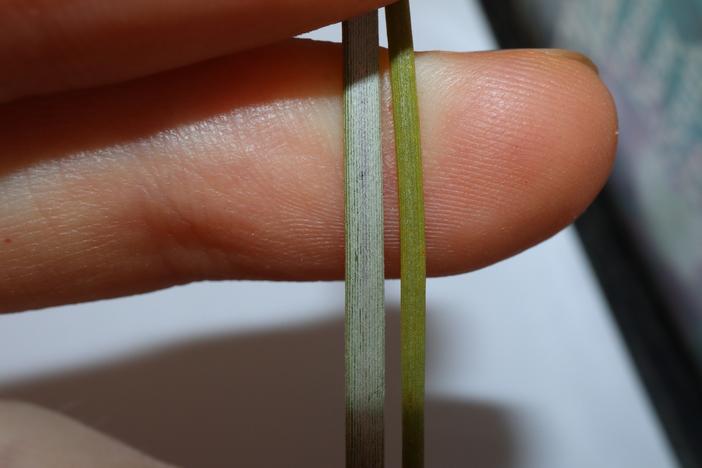Nealie
(Acacia loderi)
Nealie (Acacia loderi)
/
/

Thomas Mesaglio
CC BY 4.0
Image By:
Thomas Mesaglio
Recorded By:
Copyright:
CC BY 4.0
Copyright Notice:
Photo by: Thomas Mesaglio | License Type: CC BY 4.0 | License URL: http://creativecommons.org/licenses/by/4.0/ | Occurence ID: https://www.gbif.org/occurrence/4846760717 | Publisher: Inaturalist |














Estimated Native Range
Summary
Acacia loderi, commonly known as Nealie, is an evergreen shrub or small tree native to the semi-arid regions and woodlands of Southeastern Australia. It typically grows 3–8 m (9.8–26.2 ft) in height, with an erect or spreading habit. The bark is a smooth grey, and instead of traditional leaves, Nealie features phyllodes—leaf-like structures that are pale grey-green to green, very narrow, and long, measuring 5–11 cm (2.0–4.3 in) in length by 0.9–2.5 mm (0.035–0.098 in) wide. The bright yellow, rod-shaped flowers bloom in spring (August to October) and are quite showy, attracting various pollinators.
Nealie is valued for its drought tolerance and unique foliage, making it suitable for xeriscaping and as an ornamental plant in gardens that require minimal water. It is also used for habitat restoration and erosion control due to its fast growth and adaptability. In cultivation, it thrives in full sun and well-drained soils, tolerating a range of soil types from sandy to loamy. While it is generally low-maintenance, it can be susceptible to root rot if overwatered or planted in poorly drained soils. Nealie is not known for being invasive but should be monitored to ensure it does not spread beyond desired areas.CC BY-SA 4.0
Nealie is valued for its drought tolerance and unique foliage, making it suitable for xeriscaping and as an ornamental plant in gardens that require minimal water. It is also used for habitat restoration and erosion control due to its fast growth and adaptability. In cultivation, it thrives in full sun and well-drained soils, tolerating a range of soil types from sandy to loamy. While it is generally low-maintenance, it can be susceptible to root rot if overwatered or planted in poorly drained soils. Nealie is not known for being invasive but should be monitored to ensure it does not spread beyond desired areas.CC BY-SA 4.0
Plant Description
- Plant Type: Shrub, Tree
- Height: 10-25 feet
- Width: 8-18 feet
- Growth Rate: Moderate
- Flower Color: Yellow
- Flowering Season: Spring
- Leaf Retention: Evergreen
Growth Requirements
- Sun: Full Sun
- Water: Low
- Drainage: Medium, Fast
Common Uses
Bee Garden, Bird Garden, Drought Tolerant, Hummingbird Garden, Low Maintenance
Natural Habitat
Semi-arid regions and woodlands of Southeastern Australia
Other Names
Common Names: Nelia, Broken Hill Gidgee
Scientific Names: , Acacia loderi, Racosperma loderi,
GBIF Accepted Name: Acacia loderi Maiden